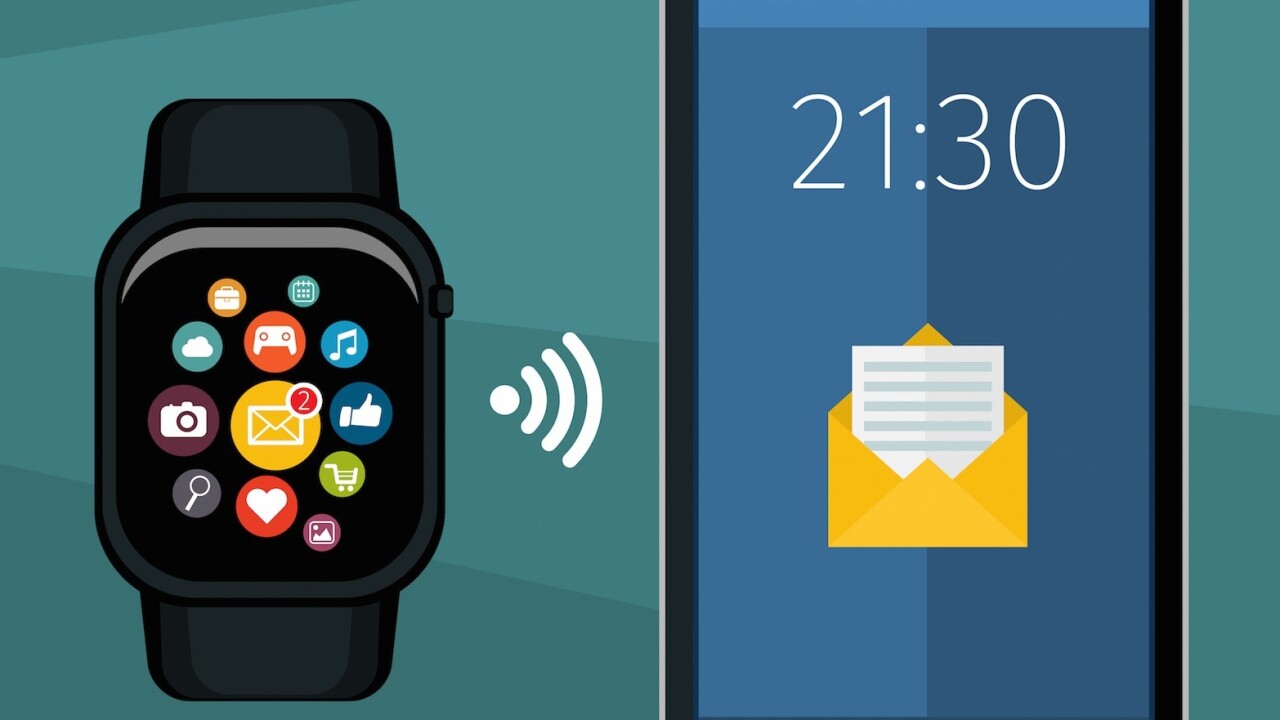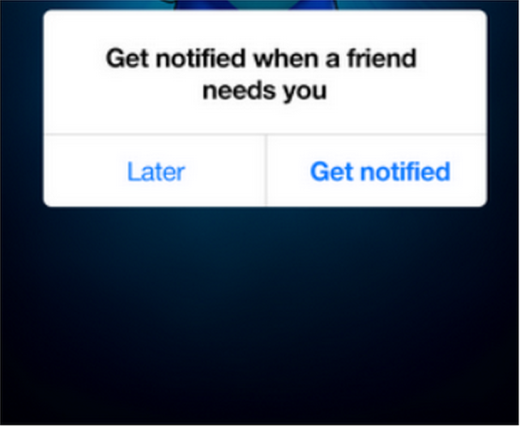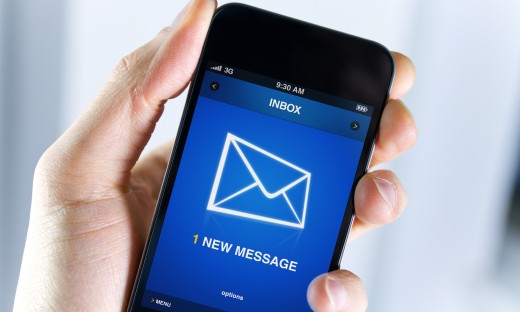
The difference between a smart mobile marketing strategy and a mediocre one is the goal. If you’re looking for downloads, you’re in the wrong group. If, however, your mind is set on acquiring loyal users for your app – it means that you are heading in the right direction. One of the best ways to turn your app from a one-tap wonder into a hit is a solid retention strategy using push notifications. In fact, reports find that push notifications boost retention rates by a staggering 180 percent. To help you get it right, here are a few tips on how to achieve push notification greatness.
Asking for Permissions
Asking for permission to send push notifications is essentially getting your mobile foot in the door. Unfortunately, it is also where many apps fail. Mobile users have a justified reluctance to give apps access to their personal information. Under Android’s current permission system, users approve a bundle of permission requests, which makes this issue particularly true for iOS. However, Android M will soon bring a new data sharing system that will change that, so you better get ready.
How it works: To ease any privacy concerns users might have, iOS marketers must communicate the value of sending notifications. Ask to notify users regarding relevant updates they truly care about as part of an overall compelling onboarding experience. Sometimes it makes sense to send the request at a later time. For example, if yours is a messaging app, follow up users’ first message with a request to notify them when a friend responds.

Create a Strategy
Any marketing effort that is executed without a clear, predetermined strategy is basically shooting in the dark. Since mobile is the most accurate and performance-based platform available, there is no need for you to speculate, but it all starts with building a plan. And still, most app marketers fail to create a push notification strategy and miss out on a wonderful opportunity to increase retention.
How it works: List the types of user behaviors you want to address, different push triggers, the goal you have set out to achieve with each notification, and more. The sharper and more meaningful the trigger you focus on – the more likely users are to respond. For instance, if your app offers users the option to register for different sweepstakes or contests, include in your strategy a trigger that alerts users when the time to register is nearly over, and when the contest itself is over. Remember that your strategy has to be agile and adapt according to real-time results, which makes this step an ongoing effort.
Push Types
Sending text notifications is great, but you can take things to the next level. Today’s technology allows you to use rich media within your message and include images for users to view in a single tap. Turn the call-to-action to an immediate action (even outside the app) by using interactive push notifications that encourage users to pay attention to what you have to say and increase retention and engagement. After all, creating a fun, interactive and entertaining experience for users is what mobile is all about.
How it works: Using interactive push, apps with a strong social aspect can increase engagement by notifying users when their friends interact with the app. Send users a push that informs them of the friend’s move and includes a follow-up action, such as “comment” or “like.” Doing this gives your push more value and makes engagement easier than ever before. You can also respond to invitations in real-time and directly from the push, as seen in the screenshot below:

Timing
It’s still everything, people. Getting the timing of your push right can make all the difference between annoyed users and delighted ones. Obviously, the first thing you should do is avoid bothering users when they are probably asleep or busy. But there’s more to it than that. The best time to connect with users depends on who your target audience is and what the notification is all about.
How it works: General studies show that it is best to send push notifications in the afternoon. However, as we’ve mentioned, it still very much depends on your goal, your audience and the industry you’re in.
A/B Testing
There’s no such thing as “one size fits all” in mobile. Just like everything else in the mobile marketing arena, you should constantly test out several options to each of the parameters mentioned on this list. And, just like everything else in mobile, you should measure results to learn which method is a keeper. This effort never ends and should be a regular part of your push notification strategy.
How it works: If you plan to offer a special deal for an upcoming seasonal event, for example, I recommend testing a variety of sales options on different user segments ahead of time. Try different tones and content, or different timing and sound to get a better sense of what users respond to.
Content
For starters, remember that push notifications are meant to deliver a very specific message, so keep your content short and include a clear call to action. The next stage of great notification content is entertaining users with a catchy phrase or a joke. Finally and most importantly – personalization is always part of the game, so send users a personal message that will grab their attention.

How it works: Approach users using their name and include details regarding the last actions the performed in the app. If you offer merchandise and they were interested in a specific item, mention it when it goes on sale. You can send a notification saying, for example: “Hey Emily, the dress you just added to your wish list is now on sale! Get it now” One more thing: tread lightly. Keep it personal without being creepy.
Segmentation
If you’re serious about providing users with a personalized experience, this is the place to start. When dividing your audience into different groups, think about the type of people you are addressing: segments can be based on age, gender, location, interests and other personal information. Taking it to the next level means that you also consider the user behavior in question. The goal you set out to achieve with a specific push notification has everything to do with how users interact with the app and how frequently they use it.
How it works: Dormant users should receive a different message than engaged ones. If you’re looking to draw dormant users back to the app, send them push notifications offering special deals that could reignite their interest.
Frequency
When marketers discover just how effective push notifications can be, their enthusiasm sometimes leads to sending too many notifications a day. This could antagonize users and bring unfortunate results. A smart push strategy helps you find the right balance that will help you connect with users without becoming the mobile equivalent of an overly attached girlfriend.

How it works: Push notifications should be divided into two groups: the first contains messages that alert users regarding actions performed by other people (“a friend just Liked your photo!”), while the second deals directly with the app (“check out our new feature!”). Users are more open to receiving the first type of message, but you should be super careful about the frequency in which you send the latter.
Prioritizing
When there are too many relevant notifications to be sent to the same user at once and you wish to avoid the mistake mentioned in tip no. 8, make sure to prioritize in advance and choose only the most important message. When building your push strategy, a smart segmentation process should help you detect this problem and address it in advance.
How it works: Separate notifications that are a means for all users (such as seasonal events) from more specific ones, and opt for the message that will speak to the users’ needs the most. If you simply cannot decide, you can create a seasonal version of your overall strategy.
Creativity
The purpose of a push notification is to get users’ attention. That is why it’s worth it to make an effort and send extra entertaining and creative messages. Have your product team collaborate with the creative staff to come up with something unique. Make sure to stick to your brand’s overall language and don’t be tempted to write anything too lengthy.
How it works: The possibilities are endless. You can make your content rhyme or be super funny. Write something relevant to recent events, or fake a “fail” message that will generate both retention and some buzz.
The above list should function as your initial push notification check-list. To make the most out of what mobile can do for you, I recommend reviewing it regularly and adjusting your notification strategy based on recent updates and real-time results. Keep testing and measuring to push your app further.
Read Next: Product Hunt for iOS gets push notifications and improved search
Image credit: Shutterstock
Get the TNW newsletter
Get the most important tech news in your inbox each week.





